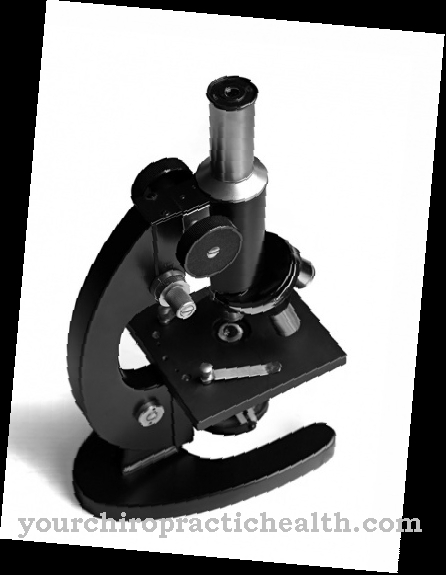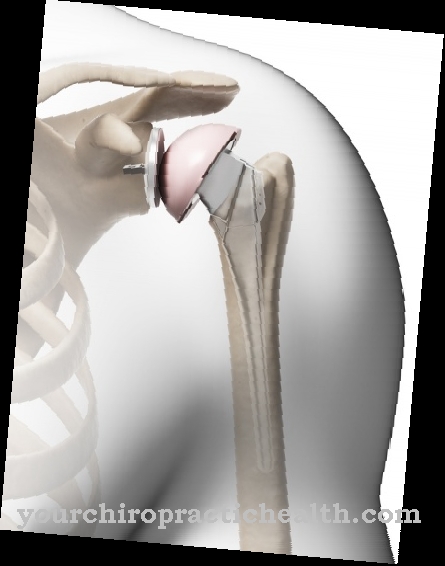Lifter, mostly too People- or Patient lifter called, are lifting aids that are used in medicine and the care of people with disabilities. As a rule, lifters are used when a disability or physical limitation means that the patient is severely restricted in his mobility.
What are lifters?

Nowadays, electric or hand-operated lifting aids are mostly referred to as lifters, which are used to lift or transport people with physical disabilities and the associated restrictions in mobility.
The first lifting aids, with which injured and restricted mobility patients or people with physical disabilities were moved and lifted and which are comparable to today's, date from the 18th century. But even before that, hospitals, patient care companies or caregiving relatives had been using things like leverage to lift and transport physically handicapped patients.
Initially, however, the first official lifting aids were mainly used in hospitals. For this reason, too, the lifting aid was still called the sick lift at that time. And: in most cases it was operated with pure muscle power. The lifting aid, however, reduced the need for muscle strength due to the type of construction. Lifters as we know them today, with which users make everyday life easier, were very rare or even non-existent at the time.
Today, most lifters are equipped with electrically or hydraulically operated lifting mechanisms that lift and often also transport the patient - for example by means of a swivel arm. This is not only safer for the patients, but also more physically friendly for the people who look after and care for people with disabilities. Lifts are intended to prevent back damage and overloading, among other things, for nursing staff and relatives who are caring for them.
Shapes, types & types
Modern lifting aids come in a wide variety of shapes, types and types: for example with a seat, a lounger, with belts or a cloth. The main reason for this is that the requirements and types of use of lifters can be fundamentally different. On the one hand, it depends on how difficult the patient, who is to be lifted or transported, is restricted in his mobility. Then there are things like the patient's physical condition, weight and possible physical injuries. All of these aspects must be considered when choosing the right lifting aid.
Some lifters help people with restricted mobility, for example, to get into the bathtub or shower without any problems, while others help them “climb stairs” (stairlift). Still other lifters are specifically aimed at people who care for and care for patients with disabilities and physical limitations. With the right lifter model, it is now also possible to lift a completely immobile patient without their help and to bring them from one place to another.
Structure & functionality
Modern lifters today consist on the one hand of the lifting surface in which the patient is during use (seat, couch, belt system, cloth) and on the other hand of an electrically or manually operated lifting mechanism, which, depending on the type of lift and whose area of application is housed in different places (under the lifting surface, above or next to it). Models with which a horizontal transfer is to be carried out also usually have a swivel arm, a chassis or running rails.
The lifting mechanism is usually controlled via a manual switch that is connected to the lifter's control unit by a flexible spiral cable. This enables problem-free and individual use of the lifter in the course of movement. On the other hand, even with modern lifters, sideways movements are still mainly carried out by pivoting by hand. In the case of completely hand-operated devices, however, the lift on the lifter is lifted using modern hydraulics that can be used by means of a pump lever or a crank mechanism.
You can find your medication here
➔ Medicines against muscle paralysisMedical & health benefits
Even today, lifting aids have the purpose of being able to lift and transport people with physical disabilities and physical limitations more easily and more gently and safely for the patient. In addition, however, the care and care of patients with physical disabilities is easier and less stressful for the caregivers. Because by using the right lifter when lifting or transporting, not only the bones, muscles and joints of the patient are spared - but also those of the person caring for them.
In addition, pure lifting aids and other widespread types of lifters (such as the stairlift or the bath and shower lift) have now played a decisive role in the everyday life of people with disabilities. They often make it possible for those affected to lead at least a semi-independent life and help them overcome small hurdles in everyday life. These types of lifters are now also used by seniors who want to maintain part of their mobility and thus their quality of life in old age.

























.jpg)


